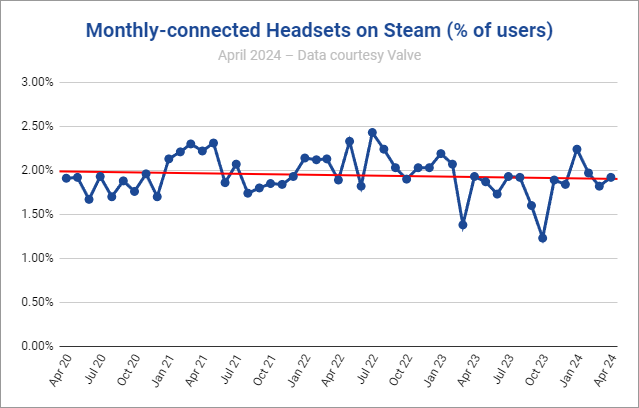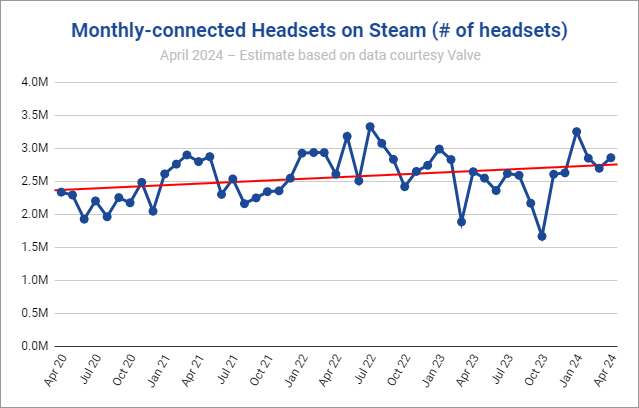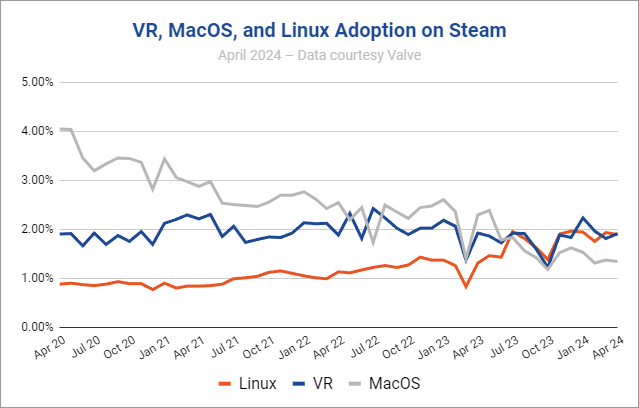The PC VR population has been growing ever so steadily over the last four years. Meanwhile, the MacOS population has shrunk and been overtaken by VR.
If you were just looking at the percent of the Steam population with monthly-connected VR headsets, you’d probably conclude that VR on the platform has shrunk slightly over the last four years. Here’s a look at the trend of the percent of the VR population on Steam:
But the total population of Steam itself has been growing at a steady clip.
To eliminate the growth of the Steam population as variable, Road to VR maintains a model, based on the historical Steam Survey data along with official data points directly from Valve and Steam, which aims to correct for Steam’s changing population and estimate the actual count—not the percent—of headsets being used on Steam.
Here’s a look at the slow overall growth in the count of monthly-connected headsets on Steam, after accounting for Steam’s overall population growth.
Looking back at percentages of the Steam population, while the percent of monthly-connected headsets on Steam has shrunk slowly over the last four years, the percent of MacOS users on Steam has shrunk much faster, representing not just a reduction in the percent, but also the count, of Mac players on Steam:
Despite nearly 20,000 Mac compatible games on Steam, the decline of Mac users may be primarily driven by Apple’s shift to its M-series processors. Although Steam runs on M-series Macs, it uses a built-in emulation layer in the operating system to do so, which means the Steam client doesn’t benefit from any advantages that are unique to applications built natively for M-series processors.
Many Mac-compatible games played through Steam also must use the same emulation layer to function, which can have a performance impact. That’s problematic for the bulk of consumer MacOS computers, which don’t have discrete GPUs like Windows gaming laptops or gaming desktops.
However, Apple has been making efforts to undo the perception that ‘Macs aren’t for gaming’. Last year the company revealed the Game Porting Toolkit; part of a set of tools designed to help make it easier for developers to make their Windows games compatible and performant on M-series Macs. So perhaps we’ll see this trend reverse.






